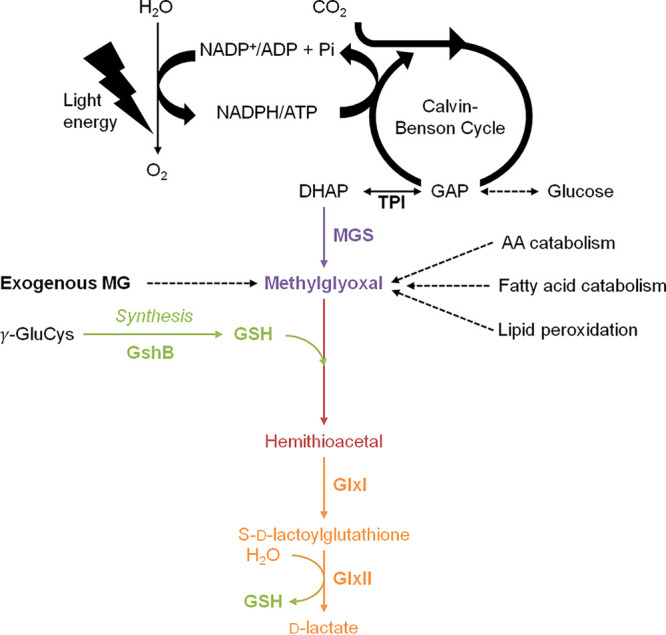FIG 1.

Schematic representation of the production and glutathione-dependent detoxification of methylglyoxal. In photosynthetic organisms such as cyanobacteria, methylglyoxal (MG) is inevitably produced from the light-driven assimilation of CO2 and the catabolism of glucose that generates the triose phosphate isomers (TPI) glyceraldehyde-3-phosphate (GAP) and dihydroxyacetone phosphate (DHAP), which can produce MG spontaneously or through the MG synthase (MGS) enzyme. MG is also produced by lipid peroxidation and the catabolism of amino acids (AA) and fatty acids. MG is mainly detoxified by the GSH-dependent glyoxalase pathway. The first step, always presented as spontaneous, involves the conjugation of glutathione (GSH) with MG, forming hemithioacetal (HTA), which is subsequently isomerized to S-d-lactoylglutathione by glyoxalase I (GlxI) and hydrolyzed by glyoxalase II (GlxII) to release GSH and d-lactate.
